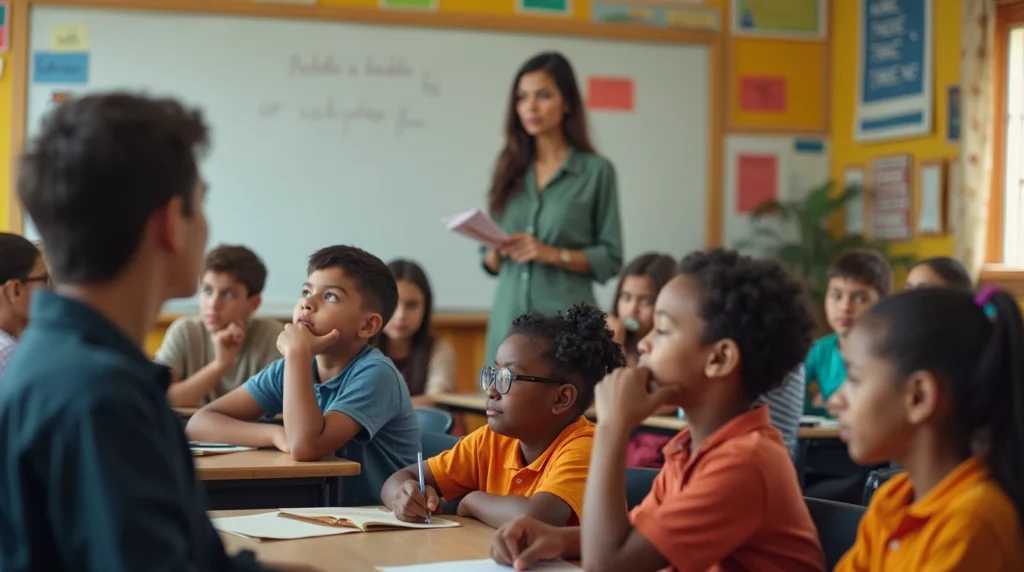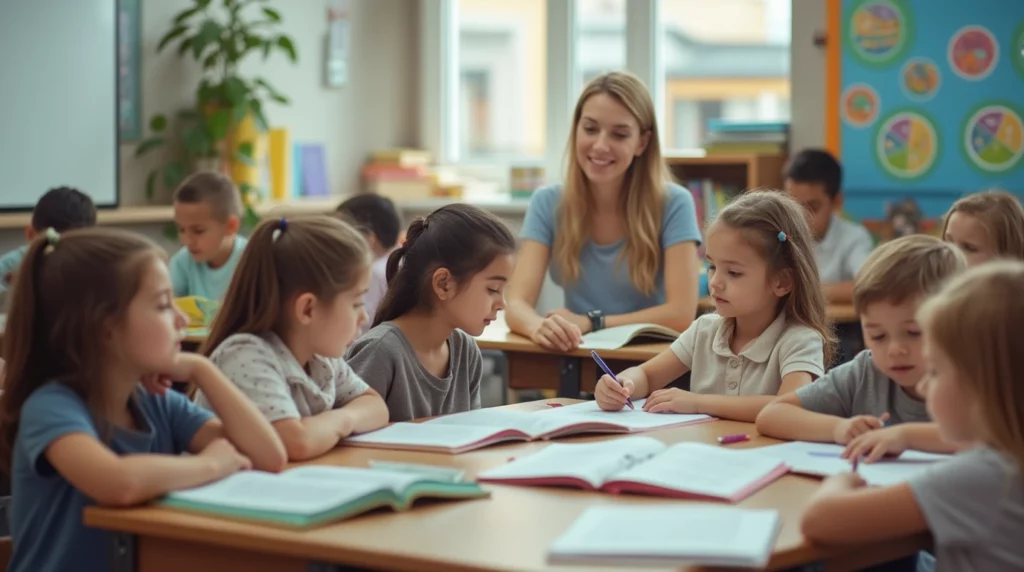Behavioral Contracts for Kids: Teacher-Child Guide

Every school day, children face various behavioral challenges that can hinder their academic and personal development. Often, teachers find themselves struggling with guiding these behaviors in the right direction. This is where a behavioral contract comes in. It’s an effective tool that helps set clear and measurable expectations for student behavior, contributing to a healthy and productive learning relationship. Let’s explore how teachers and children can work together to achieve these goals.
What is a Behavioral Contract? Definition and Benefits

Definition of a Behavioral Contract:
A behavioral contract is an agreement between a child and a teacher, often outlining specific behavioral expectations to address student behavioral issues. These expectations are framed as observable and measurable goals, making them an effective way to define desired behavior and provide clear criteria for success.
Benefits of a Behavioral Contract:
- Clarity and Clear Expectations: A behavioral contract provides clear and measurable expectations, helping to reduce chaos and improve the child’s understanding of what is required.
- Motivating Positive Behavior: The behavioral contract motivates the child to act positively by offering rewards when agreed-upon goals are met.
- Continuous Evaluation: The behavioral contract allows the teacher to regularly monitor progress and provide necessary feedback.
- Improved Communication: A behavioral contract enhances communication between the child and teacher, helping to build a healthy and productive learning relationship.
Supporting Resources:
- Numerous psychological studies indicate the benefits of using a behavioral contract in various educational settings, such as the study from [Source 1] which illustrates how behavioral contracts can contribute to improving students’ academic and behavioral performance.
Steps to Draft a Behavioral Contract Between Child and Teacher

Identifying the Target Behavior:
The first step in drafting a **behavioral contract** is to identify the negative behavior that will be addressed. For example, if a student struggles with in-class distractions, the target behavior might be “sits attentively for 15 minutes without interruption.”
Formulating Behavioral Goals:
After identifying the target behavior, it must be transformed into clear and measurable goals. For instance, the goal could be formulated as: “The student will sit quietly for 15 minutes without interruption during each study session.” Goals should be observable and measurable to ensure their clear achievement.
Determining Rewards:
Once the goals are set, you must determine the rewards the student will receive upon achieving the agreed-upon objectives. For example, a reward could be “extra playtime” or “preference in choosing a specific activity.” Rewards should be appropriate for the student’s personality and interests.
Setting the Timeframe:
A specific timeframe for achieving the goals must be established. For example, the duration could be set as: “Over the next two weeks, the student will sit quietly for 15 minutes without interruption during each study session.” The timeframe should be realistic for achieving the goals effectively.
Agreeing on the Contract:
The final step in drafting a behavioral contract is for the child and teacher to agree on all contract terms. The child should be aware of the goals, rewards, and the specified timeframe for achieving them. Innovative methods like charts or timetables can be used to make the contract easy to understand and clear for the child.
Supporting Resources:
- Refer to practical examples of successful behavioral contract drafting, such as [Source 2] which provides detailed templates for successfully drafting behavioral contracts.
Implementing the Behavioral Contract: Monitoring and Evaluation

Monitoring Progress:
After signing the **behavioral contract**, the student’s progress toward achieving the agreed-upon goals must be monitored. Tools such as daily logs or timetables can be used to document progress. Monitoring should be regular and accurate to ensure that goals are effectively met.
Evaluating Performance:
After a specified period, performance should be evaluated and constructive feedback provided. Tools like evaluation forms or direct conversations can be used to assess performance. Evaluations should be objective and constructive to foster progress.
Adjusting the Contract When Needed:
If the expected progress is not achieved, the contract should be adjusted to reflect necessary changes. Goals, rewards, or the timeframe can be modified based on the student’s progress. Adjustments should be flexible and considerate of the student’s needs.
Supporting Resources:
- Refer to tools and techniques for monitoring progress, such as timetables or daily logs, as explained in [Source 3] which details how to use these tools effectively.
Impact of the Behavioral Contract on a Child’s Personal and Educational Growth

Personal Growth:
A behavioral contract can have a significant impact on a child’s personal growth. By setting clear and measurable expectations, children can learn how to manage their behavior and achieve their goals. This can contribute to building self-confidence and fostering independence.
Educational Growth:
A **behavioral contract** can contribute to improving a child’s academic performance. By focusing on positive behavior, children can become more focused and effective in the classroom. This can lead to improved academic results and enhanced educational attainment.
Self-Confidence:
A behavioral contract can contribute to building a student’s self-confidence. By achieving agreed-upon goals, students can experience a sense of accomplishment and success. This can boost self-confidence and improve overall performance.
Supporting Resources:
- Numerous psychological studies indicate the impact of a **behavioral contract** on a child’s personal and educational growth, such as the study from [Source 4] which explains how behavioral contracts can contribute to improving students’ academic and behavioral performance.
—
Practical Tips for a Successful Behavioral Contract

Effective Communication:
Effective communication between the teacher and child is fundamental to the success of a behavioral contract. Communication should be open and constructive to foster mutual understanding. Techniques like active listening and expressing feelings can enhance communication.
Family Support:
Family support is crucial for the success of a **behavioral contract**. The family should be aware of the goals, rewards, and the specific timeframe for achieving them. Family support can significantly contribute to progress and goal attainment.
Feedback:
Regularly provide constructive feedback to improve performance. Feedback should be objective and constructive to foster progress. Tools like evaluation forms or direct conversations can be used to assess performance.
Supporting Resources:
- Refer to successful models for implementing a **behavioral contract**, such as [Source 5] which explains how to effectively use these tips.
Conclusion: Building a Better Future for Children and Teachers
By understanding how to create and implement a **behavioral contract**, we can build clear and measurable expectations for child behavior, contributing to a healthy and productive learning relationship. Let’s be part of the solution, not part of the problem.
Frequently Asked Questions: Behavioral Contract
What is a behavioral contract?
A behavioral contract is an agreement between a child and a teacher that outlines specific expectations for the child’s behavior, aiming to address behavioral issues and motivate adherence to rules.
How can I draft a behavioral contract?
To draft a behavioral contract, you should identify the target behavior, clearly formulate behavioral goals, determine rewards, set a timeframe, and ensure all involved parties agree to the contract.
What rewards can be offered to the child?
Rewards can include extra playtime, preference in choosing a specific activity, certificates of appreciation, or any other reward that suits the child’s interests and motivates them to improve their behavior.
How can a child’s progress in achieving agreed-upon goals be evaluated?
Tools such as daily logs, timetables, or behavioral observations can be used to document progress. Direct conversations with the child can also be held to discuss their performance and motivate them.
What tools can be used to support the implementation of a behavioral contract?
Motivation cards, point charts, interactive applications, and visual reminders can be used to help the child adhere to the behavioral contract.
Share your thoughts! Do you have practical experience with behavioral contracts? How can we improve this approach to enhance students’ educational and personal performance?



